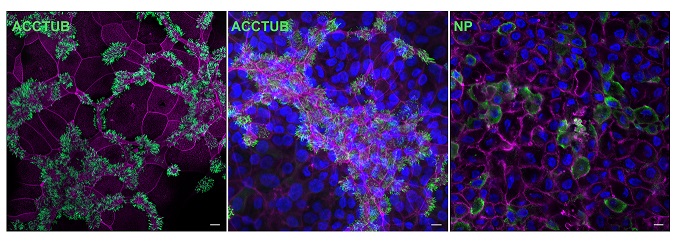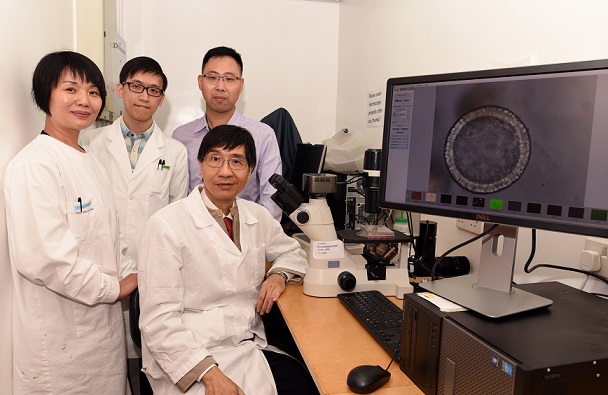HKU Establishes Mature Airway Organoids for Predicting the Infectivity of Emerging Influenza Virus
11 Jun 2018
Influenza virus infection represents a major threat to public health worldwide. Novel influenza viruses emerge due to frequent genetic mutation or shuffling, leading to interspecies jumping from animals to humans and recurrently causing sporadic human infections or even outbreaks. There is no biologically relevant, reproducible, and readily available in vitro model for predicting the infectivity of influenza viruses in humans. The research team of Department of Microbiology, Li Ka Shing Faculty of Medicine, The University of Hong Kong (HKU), recently established innovative mature airway organoids, which can mimic human airway epithelium and be utilized to predict the infectivity of emerging influenza virus to humans.
US provisional patent application has been filed for this cutting-edge technique for establishing mature airway organoids. The important findings were published in Proceedings of National Academy of Sciences and flagged as a press highlight. (link to the publication)
Research method
The mature airway organoid culture system has been established by the research team of Professor Yuen Kwok-Yung (Henry Fok Professor in Infectious Diseases, Chair Professor of Infectious Diseases) and Dr Zhou Jie (Research Assistant Professor), Department of Microbiology, Li Ka Shing Faculty of Medicine, in collaboration with Professor Hans Clevers’ laboratory (Hubrecht Institute, the Netherlands).
HKU scientists generated the airway organoids using adult stem cells from a small amount of lung tissues. After induction of differentiation, the mature airway organoids in a three-dimensional form can mimic the human airway epithelium in terms of cell composition, enzyme production and ciliary movement. The team further adapt the three-dimensional airway organoids to become two-dimensional organoids growing on permeable membranes. The two-dimensional mature organoids allow for the direct inoculation of virus onto the apical side of the airway epithelial cells, which simulates the exposed airway mucosal surface as the natural mode of influenza infection in the human respiratory tract.
Significance of the study
The research demonstrated that these mature airway organoids support the growth of the avian influenza A (H7N9) virus that comes from poultry since 2013, much better than the co-circulating poultry H7N2 virus that rarely jumps into human. Similarly, these airway organoids can support the active growth of pandemic H1N1 virus that derived from swine in 2009, much better than the classical swine H1N1 virus that seldom infects human. Thus, these mature airway organoids can indeed model the infections of influenza viruses and could be used to predict the infectivity of newly emerging influenza viruses. Collectively, the airway organoids can be expanded for more than one year. After induction of differentiation, mature airway organoids can be easily used to assess the potential of novel respiratory viruses to cause human infections; and more broadly, provide a novel and universal platform for studying the biology and pathology of the human airway.
The research team from HKU includes: Professor Yuen Kwok-Yung, Henry Fok Professor in Infectious Diseases, Chair Professor of Infectious Diseases, and Dr Zhou Jie, Research Assistant Professor, of the Department of Microbiology, Li Ka Shing Faculty of Medicine, HKU.

Confocal images of the abundant cells (left and middle) and the H7N9 virus infected (right) cells in the 2D mature airway organoids. Nuclei and cellular actin filaments were counter-stained in blue and purple.

Professor Yuen stated that mature airway organoids can be utilized to predict the infectivity of emerging influenza virus.

Group photo of Professor Yuen (front), Dr Zhou (left) and the research team members.
Media enquiries
Please contact Li Ka Shing Faculty of Medicine of The University of Hong Kong by email (medkefa@hku.hk).
